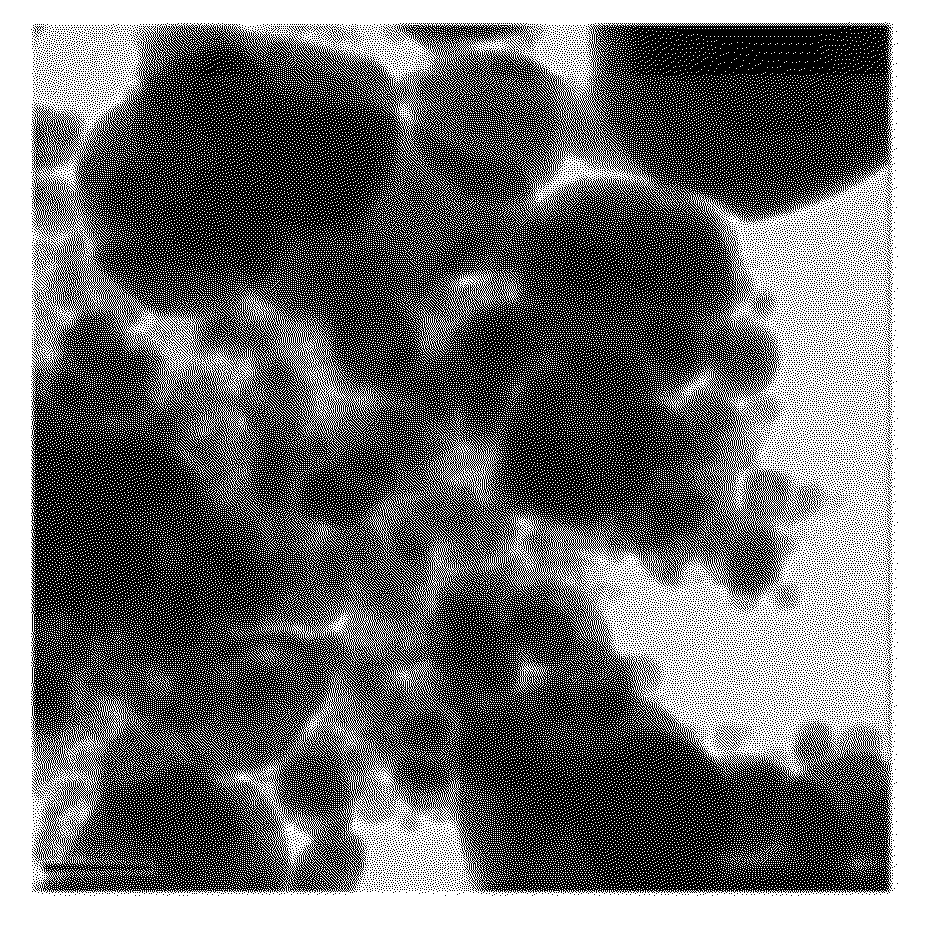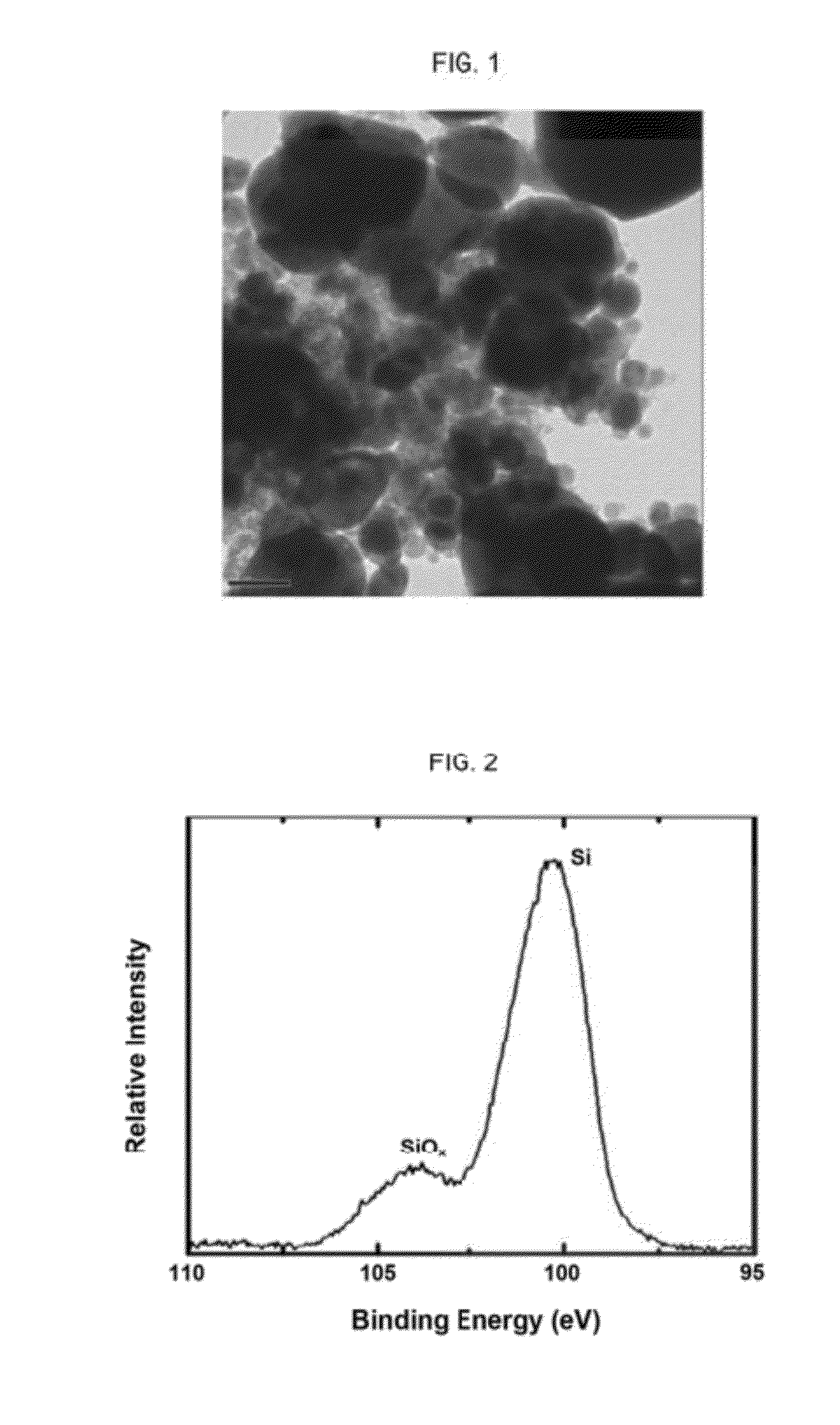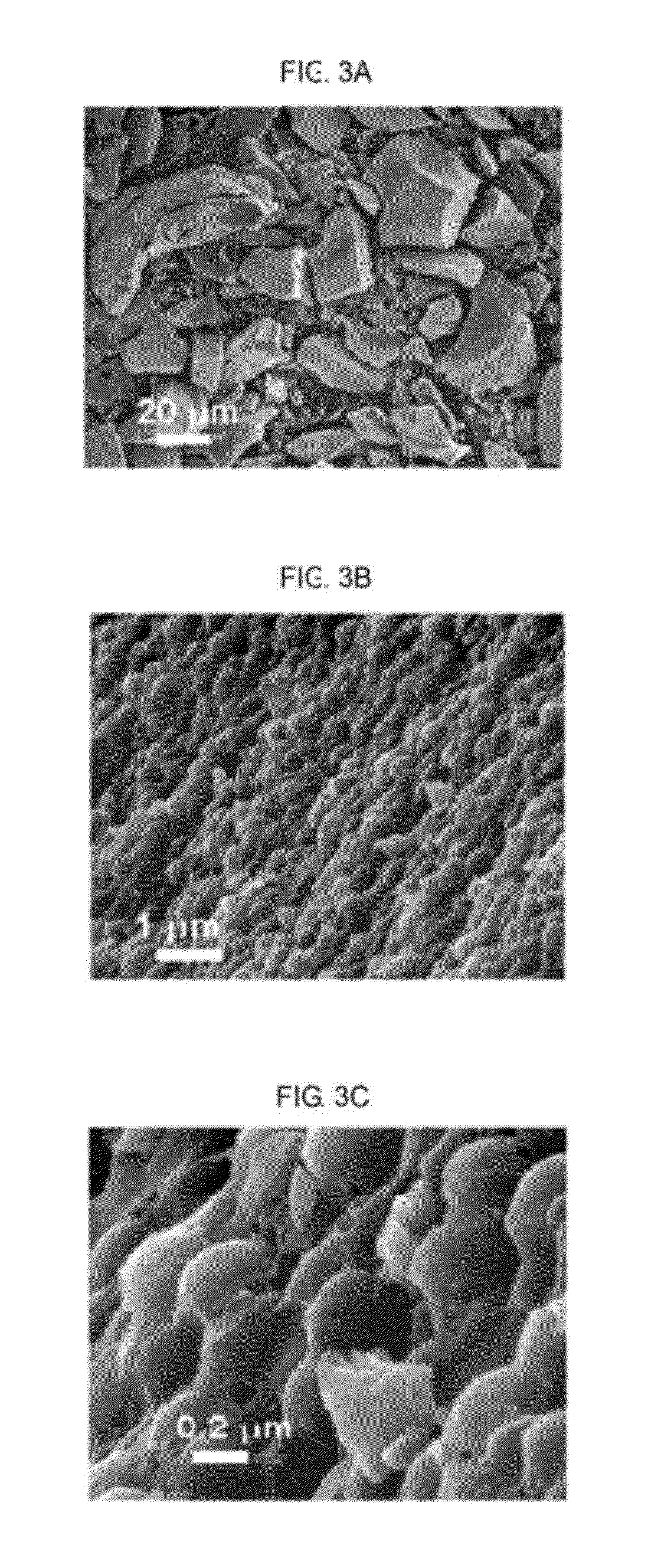Negative-electrode active material for rechargeable lithium battery
a negative-electrode active material and lithium battery technology, applied in the direction of cell components, final product manufacturing, sustainable manufacturing/processing, etc., can solve the problems of high risk of ignition or explosion, low capacity in terms of energy density per unit volume, large volume change of 300% or more at intercalation/deintercalation of lithium battery, etc., and achieve excellent cycle life properties.
- Summary
- Abstract
- Description
- Claims
- Application Information
AI Technical Summary
Benefits of technology
Problems solved by technology
Method used
Image
Examples
example 1
Preparation of Butyl-Modified Silicon
[0108]After completely mixing 30 g of SiCl4 (purity 99.999%, Aldrich Company) and 100 g of 1,2-dimethoxyethane, the mixed solution was decanted with sodium naphthalide solution, and refluxed at 400° C. for 1 hour. The obtained solution was mixed with 40 Ml of Grignard reagent n-butyllithium, and agitated overnight. At this time, the Grignard reagent n-butyllithium was reacted with SiCl4 to form butyl-modified silicon. The solvent and naphthalene were removed by heating to 120° C. at vacuum using a rotary evaporator, and by-products of NaCl and LiCl were removed using excessive amount of n-hexane and water. Finally, butyl-modified silicon was obtained as light yellow viscous gel.
[0109]Preparation of Negative-Electrode Active Material for Rechargeable Lithium Battery
[0110]The above prepared butyl-modified silicon in gel form was mixed with spherical silica nanoparticles having average particle diameter of about 200 nm. The above prepared butyl-modi...
example 2
Preparation of Negative-Electrode Active Material for Rechargeable Lithium Battery
[0114]Butyl-modified silicon prepared by the same method as Example 1 and spherical silica nanoparticles having particle diameter of about 200 nm were mixed at a weight ratio of 70:30 (butyl-modified silicon:spherical silica nanoparticles).
[0115]The obtained mixture was heated at 900° C. for 3 hours under Ar stream.
[0116]The heated product was immersed in 1M HF solution for 3 hours.
[0117]Thereby, negative-electrode active material for rechargeable lithium battery which comprises a core comprising silicon and a carbon layer having three-dimensional porous structure comprising nanopores formed on the core surface was prepared. The average diameter of the nanopores was about 100 nm, the thickness of pore wall was about 60 nm, and the thickness of the carbon layer was about 10 nm. The average diameter of crystalline grain of silicon in the core was about 40 nm. And, the specific surface area of the negativ...
example 3
Preparation of Negative-Electrode Active Material for Rechargeable Lithium Battery
[0118]Butyl-modified silicon prepared by the same method as Example 1 and spherical silica nanoparticles having particle diameter of about 200 nm were mixed at a weight ratio of 70:30 (butyl-modified silicon:spherical silica nanoparticles).
[0119]The obtained mixture was heated at 1000° C. for 3 hours under Ar stream.
[0120]The heated product was immersed in 1M HF solution for 2 hours.
[0121]Thereby, negative-electrode active material for rechargeable lithium battery which comprises a core comprising silicon and a carbon layer having three-dimensional porous structure comprising nanopores formed on the core surface was prepared. The average diameter of the nanopores was about 150 nm, the thickness of pore wall was about 100 nm, and the thickness of the carbon layer was about 10 nm. The average diameter of crystalline grain of silicon in the core was about 60 nm. And, the specific surface area of the negat...
PUM
| Property | Measurement | Unit |
|---|---|---|
| thickness | aaaaa | aaaaa |
| diameter | aaaaa | aaaaa |
| diameter | aaaaa | aaaaa |
Abstract
Description
Claims
Application Information
 Login to View More
Login to View More - R&D
- Intellectual Property
- Life Sciences
- Materials
- Tech Scout
- Unparalleled Data Quality
- Higher Quality Content
- 60% Fewer Hallucinations
Browse by: Latest US Patents, China's latest patents, Technical Efficacy Thesaurus, Application Domain, Technology Topic, Popular Technical Reports.
© 2025 PatSnap. All rights reserved.Legal|Privacy policy|Modern Slavery Act Transparency Statement|Sitemap|About US| Contact US: help@patsnap.com



